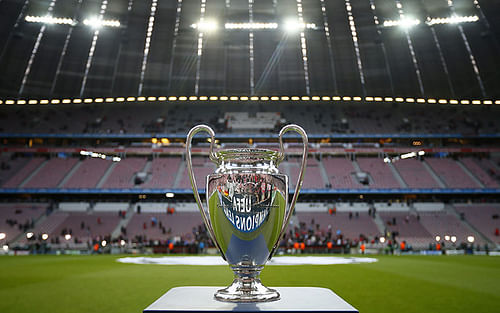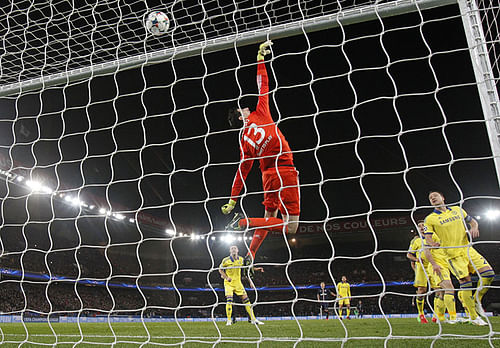
UEFA coefficient system: How the number of Champions League spots are awarded to each country

For years now, the UEFA Champions League has been one of the richest and most prestigious club level competitions the world over. Top clubs from countries all over Europe take part in a bid to be crowned the best of the best in the continent. The dearth of talent in the tournament and also the quality of matches produced only make it all the more better.
The competition’s format is such that Spain’s La Liga, England’s Premier League and Germany's Bundesliga Germany have four teams, while Italy’s Serie A , Portugal’s Primeira Liga and France’s Ligue 1 can enter three teams. This is decided on the basis of a co-efficient system devised by the UEFA which allot the number of teams country’s league can enter in the competition based on their performances over the last few seasons.
How does UEFA’s coefficient system work?
To decide the number of spots a country gets in the tournament, the country’s UEFA coefficient is used. This coefficient determines the number of teams competing in the season after the next, not in the subsequent season after the publication of the ranking. Thus, the rankings at the end of the 2014/15 season determine the team allocation by association in the 2016/17 season (not 2015/16).
Both Champions League and Europa League performances are included in the calculation. The coefficient is calculated by working out an average score for the country, which is calculated by dividing the number of 'points' obtained by the total number of clubs representing a country.
That is then added to the results of the four previous seasons to calculate the coefficient which determines the spots allocated. The top 3 countries in the coefficient rankings are awarded with four spots each in the Champions League. The three countries immediately below them are awarded 3 spots each for the same. Hence, we see four teams each from Spain, England and Germany, but only three teams each from Italy, Portugal and France.
These rankings aren’t static, however. If a country manages to leapfrog another and get into the top 3, then it will get 4 spots while the displaced country would get 3 spots. he coefficient is calculated based on the last 5 seasons, including the current one being played. Therefore, the coefficient for this season would be an aggregate of points from the 2010/11 season to the 2014/15 season. The 2010/11 season’s points will not be considered come the 2015/16 season.
This system has often been criticized for being ‘too elitist’ as it protects the status quo of top teams from the stronger nations. This bears down on the ranking of nations and the seeding of clubs as well. For example; England has four spots but only one club does well, as opposed to a country which has just one spot which does well all by itself - , then it does seem a little unfair.
Point allocation for UEFA coefficient
For every win, each team is awarded 2 points and 1 point for a draw. These points, however, are halved in the qualifying and play-off rounds. The clubs that reach the round of 16, quarter-finals, semi-finals or final of the Champions League, and the quarter-finals, semi-finals or final of the Europa League, are awarded an extra point for each round. Participation in the group stage and qualifying for the round of 16 in the Champions League sees 4 more points being awarded.
For example, England had 7 entries in total for the Champions League and Europa League this season – Chelsea, Manchester City, Arsenal, Liverpool, Everton, Tottenham Hotspur and Hull City. They managed to score a joint total of 95 points. Dividing this by the number of teams (7), we get an average tally of 13.571 points for the season.
Importance of Europa League
As mentioned earlier, the calculation for finding out the coefficients of a nation include performances from both the Champions League and the Europa League. Bonus points are awarded for reaching any of the last four stages of the Champions League and any of the last three stages of the Europa League.
This shows us that the Europa League is slightly less valuable than the Champions League, but still crucial nevertheless. Theoretically, a country could stay high up in the coefficient rankings just by dominating the Europa League alone.
The Champions League may be the better tournament with higher pedigree clubs, but the Europa League is still important to stay afloat at the top of the rankings.
|
RANK |
COUNTRY |
2010/11 |
2011/12 |
2012/13 |
2013/14 |
2014/15 |
COEFFICIENT |
|---|---|---|---|---|---|---|---|
| 1 |
Spain |
18.214 |
20.857 |
17.714 |
23.000 |
16.357 |
96.142 |
| 2 |
England |
18.357 |
15.250 |
16.428 |
16.785 |
13.571 |
80.391 |
| 3 |
Germany |
15.666 |
15.250 |
17.928 |
14.714 |
15.000 |
78.558 |
| 4 |
Italy |
11.571 |
11.357 |
14.416 |
14.166 |
16.166 |
67.676 |
| 5 |
Portugal |
18.800 |
11.833 |
11.750 |
9.916 |
8.750 |
61.049 |
| 6 |
France |
10.750 |
10.500 |
11.750 |
8.500 |
10.750 |
52.250 |
How the EPL is slipping down the UEFA rankings
When Chelsea and Arsenal were knocked out by Paris Saint-Germain and Monaco in the round of 16, Premier League fans were left sweating. They were the only English teams left who could advance further in a European competition this season, barring Everton in the Europa League (who lost out to Dynamo Kyiv as well).
This meant that they finish at a total of 80.391 as their coefficient for the previous 5 years. Only Spain (96.142) is above them with Germany (78.558) coming in a close third. But this is not the area of concern.
The problem for the Premier League is that, come next season, the points earned in the 2010/11 season won’t be counted anymore – their most fruitful season in recent times with an average tally of 18.357 points that season. With those points going out of the window and no further participation from English teams this season, they will be starting next season with a coefficient of 62.034. Germany, on the other hand, will have at least a minimum of 62.892 even if Bayern Munich and Wolfsburg don’t advance any further.

England will fall to no. 3 in the rankings next season and hence will be left even more vulnerable to a further decline to 4th place and losing out on one crucial spot. The Italian Serie A is England’s main threat in the upcoming season. They still have three more teams fighting it out in Europe – Juventus, Napoli and Fiorentina.
However, Premier League fans can breathe easy for now as the gap is pretty vast at the moment (12.715 points). They are safe for the moment - i.e. for the 2015/16 season and the 2016/17 season. Realistically, the earliest when Italy could oust England is in the 2017/18 season, but even that would also need English teams to underperform consistently while we simultaneously seeing stellar displays by teams from the land of pasta and pizza.
But looking at the way things are going recently, this could very well be a distinct possibility and one that may see England with just the three spots in the Champions League in the future. Either way, it is about time Premier League teams stopped targeting a top four spot and look to clinch a top three spot instead.